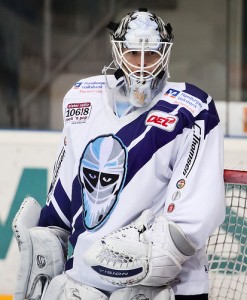Among European ice hockey leagues, Germany is often forgotten, or not so frequently cited as much as its fellow German-speaking or Nordic counterparts: this despite having a very competitive and interesting system, especially regarding its highest tier, the Deutsche Eishockey Liga or, as almost everyone call it, DEL. I will therefore try to outline here its main features and landmarks, hoping to attract some further interest from across the Atlantic.
Ice or Eis?
Ice hockey or, as the Germans call it, Eishockey (which is roughly pronounced as in English), has been played in Germany as early as 1887, when the first documented game took place in Berlin. The earliest leagues included teams coming almost exclusively from the capital, while the country became a member of the IIHF already in 1909: however, it was excluded from it between 1920 and 1926, following the German defeat in WWI.
The German team reached in the 1930s its greatest achievements, winning the European Championship in 1930 and 1934 and winning the bronze medal at the 1932 Olympics: at the following edition, held in the Bavarian town of Garmisch-Partenkirchen, they even had a Jewish player in it, Rudi Ball, despite the strong discontent expressed by the Nazi regime.
After WWII and the division of the country in two halves, two distinct leagues developed: the Oberliga, which was the highest tier of Federal German ice hockey between 1948 and 1958 (when it was replaced by the Eishockey-Bundesliga, or “Federal League”, and became the second, and eventually the third, highest German ice hockey league, which continues to be today), and its Eastern counterpart, also called Oberliga. The latter’s most interesting feature was that it actually included, between 1970 and 1990, only two teams: Dynamo Berlin and Dynamo Weisswasser, thus earning the nickname “die kleinste Liga der Welt” (“the smallest league on earth”).
After the reunification, the Eastern teams joined the Western ones in the now German-wide Bundesliga, which continued to exist until 1994.
Born again: the DEL begins
After many financial problems which plagued many of the Bundesliga and 2. Bundesliga teams at the beginning of the Nineties, it was decided to try to build a completely new league, partly modeled on the NHL, to attract more money and audience: this league, called “German Ice Hockey League”, saw 18 teams (12 from the Bundesliga and 6 from the 2. Bundesliga) playing during its first season.
Many innovations were introduced: first of all, the promotion-and-relegation system was abolished, and the league was (as it still is) owned directly by the teams, while the German federation had control only over the 2. Bundesliga (now called 2. DEL), the Oberliga, and the regional leagues through, which are particularly well organized and spread in Bavaria. Anyways, this didn’t prevent the folding of many teams to go on, and the last Bundesliga champions, the Munich Maddogs, were forced to withdraw before the end of the 1994-95 season: other no longer existing or subsequently relegated in lower divisions teams include Preussen Berlin, Frankfurt Lions, Munich Barons (which became the Hamburg Freezers in 2002), and the Essen Moskitos, leaving only eight of its founder members between today’s teams.
As the seasons went on, many players from Scandinavia and North America joined the DEL: NHL stars like Marco Sturm, Erik Cole, Doug Weight and Jochen Hecht all played in Germany, notably during the 2004-05 lockout: Canadian and American players (for instance Steven Reinprecht) are still a regular feature.

Beware of the Ice Bears
The most successful team since the birth of the DEL are undoubtedly the Eisbären (Ice Bears) from Berlin, which won seven editions of the championship and are owned, as well as the Hamburg Freezers (and of course the L.A. Kings), by the Anschutz Group; immediately after them come the Mannheim Adler (Eagles), with five championships won. Cologne and Düsseldorf are among the other prominent teams, while the Bavarian ones, despite their high number (they currently are five out of fourteen participants), have only won the league twice: in 2000 with the Barons, and last year, when Ingolstadt obtained its first title ever. Nevertheless, Bavarians still represent the absolute majority of the German players.
The regular season, where each team plays 52 games, is followed by the playoffs, to which the six best teams qualify: the teams that finish between the 7th and the 10th place play a qualification round in a best-of-three series for the two last spots in the quarterfinals: these, the semifinals and the final are played in a best-of-seven mode. The relegation, which was briefly reintroduced twice, was last abolished in 2006, and the yearly Winter Game attracts thousands of fans in football stadiums: the last one, played last January in Düsseldorf between the local team and their arch-rivals from nearby Cologne, holds the European attendance record for an ice hockey game, while the DEL is second only to the Swiss league as per season’s figures..
Not bad, for a football- (and handball-) mad country!